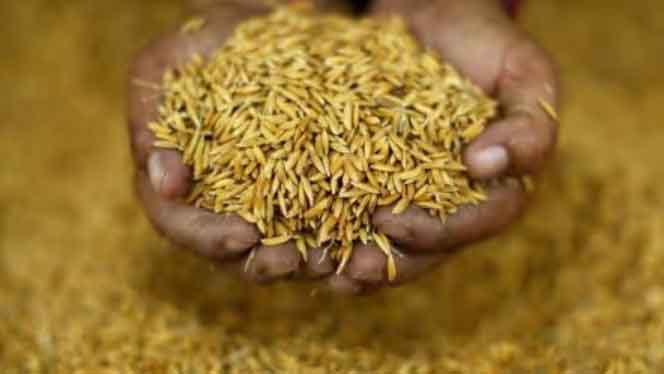BY KITIPHONG THAICHAREON
BANGKOK- Thai government measures to support rice farmers have failed to meet expectations, with some growers in the world’s second-largest rice exporting country vowing protests as they are squeezed between falling prices and rising cultivation costs.
Paddy prices have dropped by 30 percent year-on-year to an average of about 8,600 baht ($256) per ton this month, the commerce ministry said, piling pressure on the Pheu Thai party-led government to placate rice farmers – a key vote bank.
“We are not happy with the measures. I think the government is not sincere with farmers at all,” said ThitiwatKleepmalai, a farmer leader from Ayutthaya province who had submitted his group’s demands to the government on Wednesday.
The government on Thursday announced measures worth 1.89 billion baht, including providing loans for farmers to delay paddy sales, assisting with storage fees, and covering interest costs for rice mills to store the crop.
These measures, which are yet to be approved by the cabinet, are part of an effort by the government to keep paddy prices above 8,000 baht per ton, Commerce Minister Pichai Naripthaphan told reporters.
The Ayutthaya group had asked the government to either help them sell rice at 11,000 baht per ton, or provide a guaranteed price at the same level, as production costs are as high as 6,500 baht per ton, Thitiwat said.
Thailand’s centuries-old rice cultivation system is under severe stress from climate change, unsustainable farm debts and a lack of innovation, despite tens of billions of dollars in subsidies over the past decade.
Thitiwat said his group will meet with other provincial farm leaders to organize a larger protest in Bangkok this month, following an earlier rally.
Pui Saengnak, another farmer from Ayutthaya, said if there are no further measures, he and other rice growers will take to the streets in large numbers.
“Farmers are suffering greatly,” he said.
The resumption of rice exports by India – the world’s largest shipper of the grain – is likely to hit Thailand hard, with the commerce ministry expecting a 24 percent year-on-year decline in rice exports to 7.5 million tons this year.
That will follow a 13.4 percent rise in rice shipments to 9.95 million tons last year, the highest level in six years, according to the commerce ministry.
The lower forecast was due to the resumption of exports from India and improved volumes from other rice producers, Arada Fuangtong, head of the ministry’s foreign trade department, told a media conference.
Easing drought conditions are supporting yields and major importers such as Indonesia may have less demand, the ministry said.
The assessment echoed the forecast of the association of Thai rice exporters made earlier.
Chookiat Ophaswongse of the Thai Rice Exporters Association, told Reuters Thailand’s rice exports will likely drop by 25 percent in 2025 from last year partly due to more shipments from India.
More competition from India and less demand from Indonesia attributed to the forecast drop, he said.
The value of exported rice in those 10 months also rose 40 percent year on year to $5.41 billion or 191.03 billion baht, Arada Fuangtong, director-general of the Department of Foreign Trade, said.
White rice is responsible for 62 percent of the total exports or 5.18 million tons, followed by jasmine rice at 1.37 million tons, steamed rice at 1.01 million tons, fragrant rice at 0.54 million tons, sticky rice at 0.23 million tons and brown rice at 0.02 million tons.
Arada said Thailand’s five biggest export markets are Indonesia, which imported 1.12 million tons of rice, followed by Iraq (0.95 million tons), South Africa (0.72 million tons), the United States (0.7 million tons), and the Philippines (0.49 million tons).
“There is a chance that rice exports this year could reach the 10 million tons milestone, as demand in overseas markets is expected to increase during the Christmas and New Year holidays,” she said. “Some importers might also increase their orders to prepare for the Chinese New Year in late January.” —Reuters





